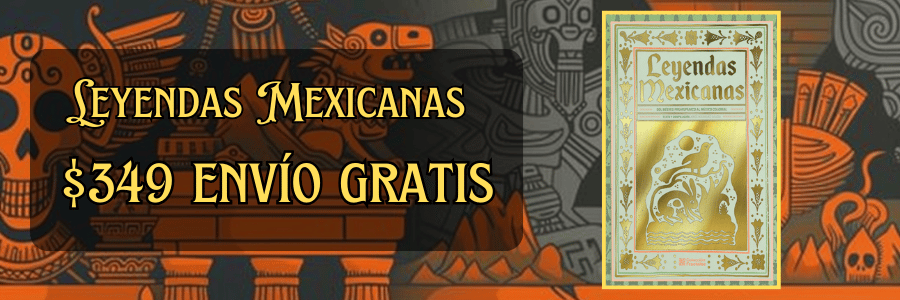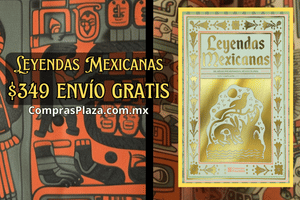Exploring Mexico’s Pre-Hispanic Sculpture and Stone Carvings
Mexico is a country imbued with a rich cultural heritage, its history deeply rooted in the spectacular achievements of its early civilizations. Ascending to prominence from around 2000 BCE, these pre-Hispanic cultures—the Olmecs, Mayans, Teotihuacan, Zapotecs, and Aztecs, among others—produced remarkable sculpture and stone carvings that offer a glimpse into their spiritual beliefs, societal structures, and artistic sensibilities.
The sheer scale and intricacy of pre-Hispanic sculpture is both breathtaking and enlightening, providing insight into a world where art and life were intertwined. From megalithic stone carvings to intimate sculptures, these artworks reflect an astonishing diversity in styles, influences, and purposes, ranging from ceremonial uses to decorative applications. By examining various regional styles, contexts, and the materials employed in their creation, we can attain a deeper appreciation for the artistic legacy of pre-Hispanic Mexico.
One of the earliest and most influential cultures in Mexico was the Olmec civilization, which flourished on the Gulf Coast from around 1200 to 400 BCE. The Olmecs are often hailed as the “mother culture” of Mesoamerica, and their colossal head sculptures have become emblematic of their artistic prowess. Crafted from basalt boulders transported from distant quarries, these heads can weigh several tons and measure over ten feet in height. The strikingly realistic facial features—complete with pronounced cheekbones, heavy brows, and small mouths—suggest the Olmecs' advanced understanding of human anatomy and ability to capture individual likenesses.
The motivations behind the colossal heads remain a topic of debate among historians and archaeologists. Some suggest they represent specific rulers, while others speculate that they honor a pantheon of Olmec deities. Regardless, these stunning works of art embody the sophistication of Olmec society and demonstrate the importance of leadership and lineage within their culture. Beyond the monumental heads, the Olmecs also produced a range of smaller carvings, including figurines and masks, which often depicted supernatural beings and offered glimpses into their spiritual practices.
Moving forward chronologically, another notable civilization was the Maya, whose artistic achievements extended from around 2000 BCE until the arrival of the Spanish in the 16th century. Renowned for their intricate stone carvings, the Maya often inscribed their artwork with glyphs detailing historical events, royal lineage, and mythological narratives. Their cities, like Tikal, Palenque, and Copán, are littered with stelae—tall, sculpted stone slabs that served both commemorative and decorative purposes.
The Maya were also adept at creating elaborate architectural sculptures, with temples and plazas adorned with intricate reliefs showing gods, mythical creatures, and historical figures engaged in dynamic narratives. The Caracol in Chichen Itza exemplifies this trend, boasting intricate carvings that celebrate the ley lines between power, cosmology, and art. Covered in elaborate depictions of ceremonies, the structure provides a window into the ways in which the Maya intertwined their religious beliefs with governance and societal structure.
Additionally, the Maya practiced a technique known as ‘chiaroscuro’ in their stone carvings, which used contrasting light and dark to create a sense of three-dimensionality. This technique resulted in a lifelike quality to their figures, capturing both movement and emotion in a manner that is still inspiring to modern artists. The richness of Mayan stone carvings extends to their penchant for creating monumental sculptures such as the “Tablets of the Cross” in Palenque, which narrates the significance of royal ceremonies through vivid iconography, skillfully combining hieroglyphs and visual storytelling.
In central Mexico, Teotihuacan emerged as a remarkable urban center by the first century CE, renowned for its monumental architecture and highly developed art scene. Evidence suggests that Teotihuacan was home to a diverse population, which is reflected in its artistic creations. Often regarded as a cosmopolitan hub, the city produced a range of sculptures that highlighted its unique cultural melting pot. The Temple of the Feathered Serpent, also known as the Temple of Quetzalcoatl, contains some of the most intricate carvings of the region.
Rising above the temple walls are elaborate stone reliefs depicting serpents and birds, which symbolize important deities in Mesoamerican cosmology. The artistic style of these carvings combines naturalistic forms with abstract stylization, creating a visually striking aesthetic that has left a lasting impression on succeeding civilizations. Scholars continue to analyze the interrelationships between art, ideology, and power in Teotihuacan, contemplating how these sculptures might have conveyed the city’s connection to its divine patrons.
As the Teotihuacan culture waned, the Zapotec civilization gained prominence in the Oaxaca Valley by around 500 BCE. Known for crafting ornate stone carvings, the Zapotecs produced funerary art and ceremonial sculptures at their capital, Monte Albán. One of the most notable features of Zapotec sculpture is its distinctive use of a symbolic hieroglyphic system, integrating text with images to impart meaning.
The Zapotecs are renowned for their striking limestone tombs, elaborately adorned with intricate carvings that encapsulate family lineage and ancestral reverence. Figures depicted in these tombs often represent ancestors or deities, reinforcing the social hierarchy and religious beliefs intrinsic to Zapotec culture. The emphasis on ancestral worship is evident in the famous Danzantes—carved figures that depict both dancers and seemingly sacrificial victims, serving a dual purpose as celebratory and commemorative art.
Moving forward to the height of the Aztec Empire, the artistic achievements reached new heights in the 14th to 16th centuries. The Aztecs produced monumental sculptures that aligned closely with their cosmological beliefs and myths. The Templo Mayor in Tenochtitlán, the Aztec capital, featured dramatic religious sculptures, including depictions of various deities such as Huitzilopochtli and Tezcatlipoca, intricately carved onto stone altars and platforms used for human sacrifices. This sacrificial aspect of Aztec art was both a celebration of the divine and an appeal to their gods for favor, emphasizing the intensity of their religious fervor.
Additionally, the Aztecs honed particular artistic styles, such as the use of finely crafted stone masks, which were often designed for performance and ritual. These ceremonial masks, intricately carved with expressive features, created an emotional connection between the wearer and the audience, highlighting the role of art in spiritual expression. Artisans used techniques such as polishing and bas-relief carving to invoke depth and texture, establishing the Aztecs as proficient craftsmen.
The interplay of colors also played a significant role in Aztec stonework. For instance, sculptures reflecting the duality of human existence were often painted with vibrant pigments to symbolize the balance between life and death. This practice not only heightened the visual impact of the sculptures but also reinforced their significance in ritual practice and society at large.
Throughout history, the influence of geography and available materials significantly impacted the styles and preferences of different pre-Hispanic cultures in Mexico. In the arid landscapes of the north, communities often utilized materials such as sandstone and adobe, while coastal groups favored using the rich resources available from the ocean and riverbanks. The varieties of stone, including limestone, basalt, and volcanic rock, shaped not only the tactile quality of their sculptures but also their aesthetic value.
While modern scholars have sought to categorize and analyze these different artistic approaches, the legacy of pre-Hispanic sculptures transcends rigid classification, revealing how art continually interacts with cultural identity and the natural world. Indeed, sculptures served multifaceted roles within society, from embodying religious beliefs to conveying social hierarchies and honoring history.
In contemporary times, many of the most significant pre-Hispanic sculptures have been rediscovered and exhibited in museums worldwide, showcasing their historical relevance and artistic beauty. The National Museum of Anthropology in Mexico City is a prime repository of such masterpieces, providing a platform for discussions around preservation, cultural appropriation, and the ongoing significance of pre-Hispanic heritage. Through exhibitions, researchers can contextualize these artifacts within their original cultural frameworks, facilitating a greater understanding of the philosophies, techniques, and societal structures of these ancient civilizations.
Moreover, the global art community grapples with the post-colonial implications surrounding pre-Hispanic artifacts. Ongoing repatriation efforts aim to return these significant cultural materials to their rightful places, restoring dignity and historical context to their origins. As scholars continue to investigate the artistry of pre-Hispanic sculpture and stone carvings, their relevance persists in fostering dialogues about art, heritage, identity, and the human experience.
Ultimately, exploring Mexico's pre-Hispanic sculpture and stone carvings offers us more than mere aesthetic appreciation; it reveals how art encapsulates humanity's diverse aspirations, creations, spirituality, and beliefs. The remarkable intricacies of these ancient works persist as a testament to the enduring spirit and ingenuity of the civilizations that inhabited this land long before the arrival of European colonizers. From the Olmec colossal heads to the Aztec monuments, these artifacts remain pivotal in illuminating the complex cultural tapestry of Mexico, helping us weave together strands of history and art for generations to come.
Explore More:
| Porfirio Díaz’s Last Years in Power: Resistance and Revolution |
| The Battle of Puebla: An Underdog Victory Against a Global Power |
| The Mexican-American War: A Struggle for Land and Power |
| Chichimeca Relations with the Tarascans and Other Indigenous Peoples |
| How to Diversify Your Crypto Portfolio Effectively |
| The Economic Consequences of the French Invasion on Mexico’s Development |
| The Execution of Maximilian I: The Trial and its Global Impact |
| Hernán Cortés and the Fall of the Aztec Empire |
| The Challenges of Transitioning Away from Oil in Energy-Dependent Economies |
| How Oil Became the World’s Most Important Energy Source |



